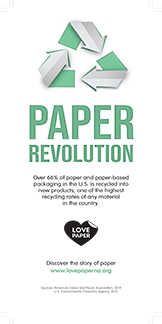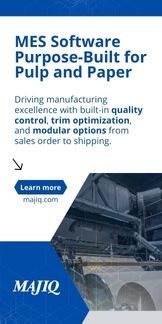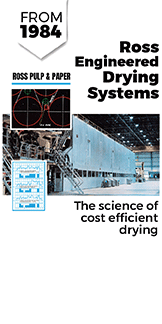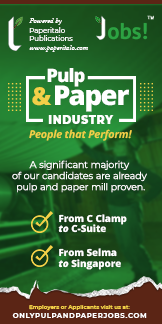JACKSONVILLE, Fla. (News release) -- Rayonier Advanced Materials Inc. reported results for its second quarter ended June 28, 2025.
"Our second quarter results were impacted by a series of extraordinary and largely non-recurring challenges, including tariff volatility, operational disruptions and significant non-cash charges," said De Lyle Bloomquist, President and CEO of RYAM. "These factors, while meaningful in the short term, are now largely behind us. As a result, we revised our 2025 Adjusted EBITDA guidance to $150 to $160 million. Importantly, these headwinds peaked in the second quarter and we're already seeing tangible signs of stabilization and recovery entering the second half of the year.
"Looking ahead, we expect that our long-term plan remains on track to nearly double our EBITDA over the next two years relative to our revised 2025 outlook. This confidence is grounded in the cessation of extraordinary headwinds encountered in 2025 and a clear set of growth drivers. We are actively addressing these near-term headwinds and expect to capture significant upside from our Cellulose Specialties strategy, investments into Biomaterials and cost reduction initiatives. In addition, we have initiatives in place to restore our Paperboard and High-Yield Pulp businesses to historical levels of profitability and position it for divestiture in 2026. With disciplined execution and a solid balance sheet, we are well-positioned to capture these opportunities and unlock substantial, sustainable shareholder value. The temporary setbacks we've faced this year do not alter the fundamentals of our business or the trajectory we are on--they simply reinforce the importance and impact of the strategy we are executing," concluded Mr. Bloomquist.
Second Quarter 2025 Financial Results
The Company reported a net loss of $363 million, inclusive of a $337 million non-cash deferred tax asset write-off, or $(5.44) per diluted share, for the quarter ended June 28, 2025 compared to net income of $11 million, or $0.17 per diluted share, for the prior year quarter.
Loss from continuing operations for the quarter ended June 28, 2025 was $366 million, inclusive of the $337 million non-cash deferred tax asset write-off, or $(5.48) per diluted share, compared to income from continuing operations of $8 million, or $0.12 per diluted share, for the prior year quarter.
Beginning in January 2025, the Company reorganized its former High Purity Cellulose operating segment into three separate businesses: Cellulose Specialties, Biomaterials and Cellulose Commodities. No changes were made to the composition of the Paperboard and High-Yield Pulp operating segments. Prior period segment results have been recast to align with this new segment reporting structure.
Net sales were comprised of the following for the periods presented:
|
|
Three Months Ended |
||||||||||
|
(in millions) |
June 28, 2025 |
|
March 29, 2025 |
|
June 29, 2024 |
||||||
|
Cellulose Specialties |
$ |
208 |
|
|
$ |
201 |
|
|
$ |
241 |
|
|
Biomaterials |
|
6 |
|
|
|
7 |
|
|
|
8 |
|
|
Cellulose Commodities |
|
59 |
|
|
|
75 |
|
|
|
85 |
|
|
Paperboard |
|
47 |
|
|
|
49 |
|
|
|
60 |
|
|
High-Yield Pulp |
|
29 |
|
|
|
31 |
|
|
|
33 |
|
|
Eliminations |
|
(9 |
) |
|
|
(7 |
) |
|
|
(8 |
) |
|
Net sales |
$ |
340 |
|
|
$ |
356 |
|
|
$ |
419 |
|
Operating income (loss) was comprised of the following for the periods presented:
|
|
Three Months Ended |
||||||||||
|
(in millions) |
June 28, 2025 |
|
March 29, 2025 |
|
June 29, 2024 |
||||||
|
Cellulose Specialties |
$ |
29 |
|
|
$ |
31 |
|
|
$ |
50 |
|
|
Biomaterials |
|
1 |
|
|
|
2 |
|
|
|
1 |
|
|
Cellulose Commodities |
|
(9 |
) |
|
|
(13 |
) |
|
|
(21 |
) |
|
Paperboard |
|
-- |
|
|
|
(2 |
) |
|
|
12 |
|
|
High-Yield Pulp |
|
(7 |
) |
|
|
(7 |
) |
|
|
1 |
|
|
Corporate |
|
(15 |
) |
|
|
(26 |
) |
|
|
(15 |
) |
|
Operating income (loss) |
$ |
(1 |
) |
|
$ |
(15 |
) |
|
$ |
28 |
|
Following the indefinite suspension of Temiscaming cellulose operations in the third quarter of 2024, certain infrastructure assets of the site's cellulose plant continue to run in support of the ongoing energy needs of the Paperboard and High-Yield Pulp operations. As such, beginning in the fourth quarter of 2024, the net impact of the custodial site costs being incurred and the sales of any electricity generated by the running of the cellulose plant assets are reflected within the operating results of the Paperboard and High-Yield Pulp businesses.
Cellulose Specialties
Net sales for the second quarter decreased $33 million, or 14 percent, compared to the same prior year quarter driven by a 15 percent decrease in sales volumes that was in line with expectations and due primarily to a pause in customer orders driven by uncertainty surrounding imposed tariffs, strong sales in the prior year quarter ahead of the indefinite suspension of Temiscaming cellulose operations in July 2024 and the impact of a labor strike at the Tartas cellulose plant in the current quarter. Partially offsetting the sales volume decrease was a 3 percent increase in sales prices.
Operating income for the second quarter decreased $21 million, or 42 percent, compared to the same prior year quarter driven by the lower sales volumes, higher key input costs, lower production due to operational challenges and the labor strike at the Tartas cellulose plant, and the one-time prior year recognition of $3 million in CEWS benefit claims.
Compared to the first quarter of 2025, net sales increased $7 million driven by a 3 percent increase in sales prices, with flat sales volumes. Operating income decreased $2 million primarily due to operational challenges and the labor strike at the Tartas cellulose plant in the current quarter, partially offset by the higher sales prices.
Biomaterials
Net sales for the second quarter decreased $2 million, or 25 percent, compared to the same prior year quarter driven by lower production due to operational challenges and the impact of the labor strike at the Tartas cellulose plant in the current quarter, which limited raw material supply due to the bioethanol facility's reliance on the Tartas cellulose plant for feedstock.
Operating income for the second quarter was flat compared to the same prior year quarter as higher shared and ancillary service costs under the business's newly established cost structure were offset by lower production costs as a result of the aforementioned reductions in feedstock availability.
Compared to the first quarter of 2025, net sales and operating income each decreased $1 million, impacted by the lower production due to the aforementioned reductions in feedstock availability.
Cellulose Commodities
Net sales for the second quarter decreased $26 million, or 31 percent, compared to the same prior year quarter driven by a 33 percent decrease in sales volumes due primarily to lower non-fluff commodity sales and the impact of the labor strike at the Tartas cellulose plant, partially offset by a 7 percent increase in sales prices driven by market supply dynamics for fluff.
Operating loss for the second quarter improved $12 million, or 57 percent, compared to the same prior year quarter driven by lower non-fluff commodity losses, lower indefinite suspension charges and lower key input costs, partially offset by lower production due to operational challenges and the labor strike at the Tartas cellulose plant, and the one-time prior year recognition of $2 million in CEWS benefit claims.
Compared to the first quarter of 2025, net sales decreased $16 million as sales volumes decreased 24 percent primarily driven by lower production due to operational challenges and the labor strike at the Tartas cellulose plant in the current quarter. These decreases were partially offset by a 6 percent increase in sales prices that was driven by market supply dynamics. Operating loss improved $4 million primarily due to the higher sales prices, partially offset by the lower sales volumes.
Paperboard
Net sales for the second quarter decreased $13 million, or 22 percent, compared to the same prior year quarter. Sales prices and volumes decreased 3 percent and 23 percent, respectively, driven by mix, shifting customer dynamics associated with tariff uncertainty and increased competitive activity due to increased EU imports and the start-up of new U.S. capacity.
Operating results for the second quarter declined $12 million, or 100 percent, compared to the same prior year quarter driven by the lower sales, the impact of Temiscaming net custodial site costs and the one-time prior year recognition of $2 million in CEWS benefit claims.
Compared to the first quarter of 2025, net sales decreased $2 million driven by an 8 percent decrease in sales volumes due to shifting customer dynamics associated with tariff uncertainty, partially offset by a 2 percent increase in sales prices. Operating results improved $2 million driven by lower production costs due to improved operations.
High-Yield Pulp
Net sales for the second quarter decreased $4 million, or 12 percent, compared to the same prior year quarter. Sales prices and volumes decreased 11 percent and 7 percent, respectively, driven by lower demand, including in China where demand for all grades of market pulp were down, continued oversupply in China and the timing of shipments, primarily related to shipping challenges to customers in India.
Operating results for the second quarter declined $8 million compared to the same prior year quarter driven by the lower sales, higher logistics costs, the impact of Temiscaming net custodial site costs and the one-time prior year recognition of $2 million in CEWS benefit claims.
Compared to the first quarter of 2025, net sales decreased $2 million and operating loss was flat driven by 2 percent and 13 percent decreases in sales prices and volumes, respectively, that were offset by lower key input costs.
Corporate
Operating loss for the second quarter was flat compared to the same prior year quarter as lower variable compensation costs and a decrease in costs related to the Company's ERP implementation were offset by unfavorable foreign exchange rates in the current quarter compared to favorable rates in the prior year quarter.
Compared to the first quarter of 2025, operating loss improved $11 million driven by first quarter non-cash environmental reserves charges of $12 million and lower variable compensation costs, partially offset by unfavorable foreign exchange rates in the current quarter compared to the first quarter.
Non-Operating Income & Expense
Interest expense for the quarter ended June 28, 2025 increased $2 million compared to the same prior year quarter primarily driven by an increase in the average effective interest rate on debt. Total debt decreased $32 million from June 29, 2024 to June 28, 2025.
Unfavorable foreign exchange rates during the quarter ended June 28, 2025 compared to favorable rates in the same prior year quarter resulted in a net unfavorable impact of $2 million.
Income Taxes
The Company determined that a valuation allowance is required against a substantial portion of its Canadian deferred tax assets, driven by weakness in the Paperboard and High-Yield Pulp businesses, resulting in the recognition of a non-cash tax expense of $337 million in the current quarter. This determination was made after considering all available evidence, with significant weight being given to evidence that can be objectively verified, such as recently incurred losses in the applicable jurisdiction, as required under U.S. GAAP. The valuation allowance does not impact the Company's legal right to use the deferred tax assets against cash taxes and future recognition will continue to be evaluated as market conditions evolve.
The effective tax rate on the loss from continuing operations for the quarter ended June 28, 2025 was not meaningful as a result of the valuation allowance placed on the Company's Canadian deferred tax assets. Also driving the difference between the effective tax rate and the federal statutory rate of 21 percent were different statutory tax rates in foreign jurisdictions, valuation allowances on nondeductible U.S. interest expense, U.S. tax credits and nondeductible executive compensation.
The effective tax rate on the income from continuing operations for the quarter ended June 29, 2024 was a benefit of 11 percent. This rate differed from the federal statutory rate of 21 percent primarily due to the release of certain tax reserves, return-to-accrual adjustments, excess deficit on vested stock compensation and changes in the valuation allowance on disallowed interest deductions.
Discontinued Operations
During the quarter ended June 28, 2025, the Company recorded pre-tax income from discontinued operations of $4 million related to the remaining CEWS benefit claims deferred since 2021.
During the quarter ended June 29, 2024, the Company recorded pre-tax income from discontinued operations of $5 million related to CEWS benefit claims deferred since 2021 and a pre-tax loss of $1 million on the sale of its softwood lumber duty refund rights.
Cash Flows & Liquidity
The Company generated operating cash flows of $10 million during the six months ended June 28, 2025 driven by strong working capital management despite the significant decline in operating results.
The Company used $75 million in investing activities during the six months ended June 28, 2025 related to net capital expenditures, which included $13 million of strategic capital spending.
The Company had $1 million of net cash inflows from financing activities during the six months ended June 28, 2025 from net borrowings of long-term debt, partially offset by the repurchase of common stock and net repayments of short-term debt.
The Company ended the second quarter with $202 million of global liquidity, including $71 million of cash, $116 million of borrowing capacity under the ABL Credit Facility and $15 million of availability under the France factoring facility.
As of June 28, 2025, the Company's consolidated net secured leverage ratio was 3.8 times covenant EBITDA.
Business Outlook
The Company now expects full year 2025 Adjusted EBITDA to range between $150 million and $160 million, reflecting the impact of extraordinary and primarily non-recurring challenges encountered during the first half of the year. These included global trade disruptions, tariff-driven market volatility, operational challenges, softer demand in Paperboard and High-Yield Pulp, a non-cash environmental charge and foreign exchange headwinds.
While these near-term pressures weighed on second quarter results, they are largely considered to have peaked in the period. Since May, order trends in Cellulose Specialties have improved month over month and operational performance across the Company's cellulose facilities has remained broadly stable. With signs of normalization emerging, RYAM is positioned to rebuild momentum in the second half of the year.
Looking ahead, the Company expects to meaningfully grow EBITDA over the two years following 2025, supported by focused efforts to increase Cellulose Specialties sales volume from the expected market demand growth, expand Cellulose Specialties margins by increasing prices and investing in high return cost reduction projects and accelerate high-return investments in Biomaterials. These actions are core to RYAM's long-term strategy, which targets over $300 million in run-rate EBITDA by the end of 2027.
The Company remains committed to disciplined capital allocation. As previously disclosed, RYAM began a process to explore the sale of its Paperboard and High-Yield Pulp businesses; however, given current market conditions and trade-related uncertainty, the process is now effectively on hold.
The following segment outlooks reflect RYAM's current performance expectations for its operating businesses for the remainder of 2025.
Cellulose Specialties
Average cellulose specialties sales prices in 2025 are expected to increase by a mid single-digit percentage compared to the prior year. Sales volumes are anticipated to decline by a high single-digit percentage, reflecting tariff impacts, accelerated destocking of acetate and the absence of 2024 bridge volumes following the indefinite suspension of production at the Temiscaming plant. Acetate demand remains soft due to tariff-driven impacts, accelerated customer destocking and weaker global cigarette market trends. Ethers volumes are anticipated to improve, while demand for other cellulose specialties grades remains strong, supported by tight global supply conditions. Raw material input and logistics costs are expected to increase moderately year-over-year. All cellulose plants are currently running at expected operating rates.
Overall, EBITDA is expected to approximate $232 million to $235 million for the full year 2025, subject to additional impacts from tariffs.
Biomaterials
The Company continues to evaluate investments in new green energy and renewable products to provide both increased end-market diversity and incremental profitability. The Company intends to proceed only with those projects that are expected to meet its investment hurdles: a minimum 30 percent return on equity and a less than two-year payback period for RYAM equity. In the fourth quarter of 2024, the Company secured green capital of €67 million, which allows it to advance the biomaterials strategy and further progress towards its goal of generating over $70 million of EBITDA from RYAM's Biomaterials business, inclusive of the projects summarized below:
- The Company's bioethanol facility in France is operational since the first quarter of 2024.
- The Company re-started its lignosulfonate powder plant in France in the first quarter of 2025.
- The Company continues to pursue an investment in a bioethanol facility in Fernandina Beach, Florida, similar to its bioethanol facility in France. While the City of Fernandina Beach recently denied the site plan application for this project, the Company believes the City erred in making its determination and is pursuing all available legal remedies. In expectation of a favorable outcome, the Company continues to advance engineering plans and explore potential commercial agreements.
- The Company is evaluating investments in crude tall oil facilities in Jesup, Georgia and Tartas and a prebiotics facility at the Jesup plant, and is currently working on permitting, engineering and commercial agreements for these new facilities. In July 2025, the Company received GRAS (generally recognized as safe) status for its prebiotics product with a letter of no objection from the U.S. Food and Drug Administration.
- The Company is a partner in AGE (Altamaha Green Energy, LLC), a start-up entity that aims to utilize renewable forestry waste and other biomass generally discarded as waste to generate green electricity for the State of Georgia from a new facility to be constructed adjacent to the Company's Jesup plant. Although the project remains in the development phase, AGE is actively evaluating the construction and financing requirements for the new facility.
- The Company recently signed Memoranda of Understanding with Verso Energy to explore electrofuel Sustainable Aviation Fuel (eSAF) opportunities at both its Jesup and Tartas facilities, and with GranBio to develop a pilot-scale SAF plant at the Jesup site.
The Company expects to make final investment decisions on several of these projects in 2025.
Overall, EBITDA is expected to approximate $8 million to $10 million for the full year 2025.
Cellulose Commodities
Chinese retaliatory tariffs continue to disrupt global fluff market dynamics, creating a mismatch between supply and demand. As a result, RYAM's production is being actively shifted toward non-fluff commodities until RYAM's new DWP (dissolving wood pulp) fluff product is fully qualified in China. While demand remains uncertain, RYAM will continue to adjust production mix to mitigate the impact of direct tariffs and related second-order effects. Raw material input and logistics costs are expected to increase moderately.
Overall, EBITDA is expected to approximate a loss of $15 million for the full year 2025, subject to additional impacts from tariffs.
Paperboard
Paperboard sales volumes are expected to remain soft due to continued economic uncertainty and weaker customer demand. Additionally, prices are expected to decline year-over-year, reflecting increased competitive activity from new U.S. competitor capacity. Input costs are projected to rise as a result of higher purchased pulp prices, increased allocation of Temiscaming custodial site costs and ongoing tariff mitigation efforts. In response to ongoing market weakness and a softer sales outlook, the Company is idling Paperboard production for two weeks during the third quarter as a proactive measure to align inventory levels with demand and preserve cash flow.
Overall, EBITDA is expected to approximate $20 million for the full year 2025.
High-Yield Pulp
High-Yield Pulp sales prices and volumes are expected to decline in 2025, driven primarily by continued oversupply in the Chinese market. Input costs are also projected to rise due to a higher allocation of custodial site costs at the Temiscaming facility. Given the ongoing market weakness, the Company continues to take proactive steps to manage production and costs. In response to ongoing market weakness and a softer sales outlook, the Company is idling High-Yield Pulp production for three weeks during the third quarter to proactively manage inventory levels and preserve cash flow.
Overall, EBITDA is expected to approximate a loss of $20 million to $25 million for the full year 2025.
Corporate
Corporate costs for full year 2025 are expected to be higher compared to the prior year primarily due to the $12 million of non-cash environmental reserve charges recorded in the first quarter and potential continued foreign exchange headwinds from a weaker U.S. dollar. These impacts are expected to be partially offset by lower corporate spending in the second half of the year following the completion of the Company's ERP implementation.
Overall, Corporate costs are expected to approximate $70 million for the full year 2025.






















